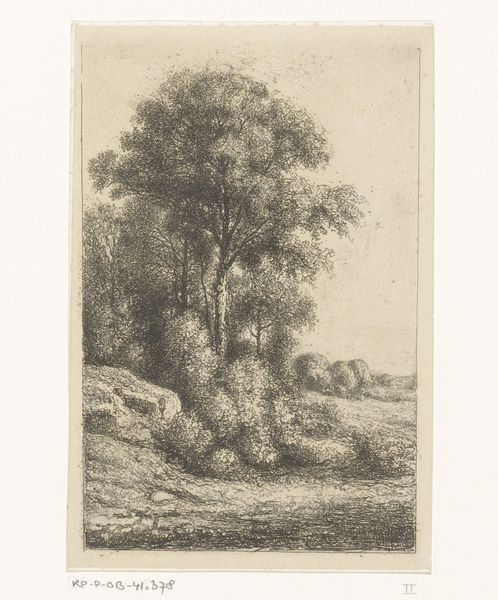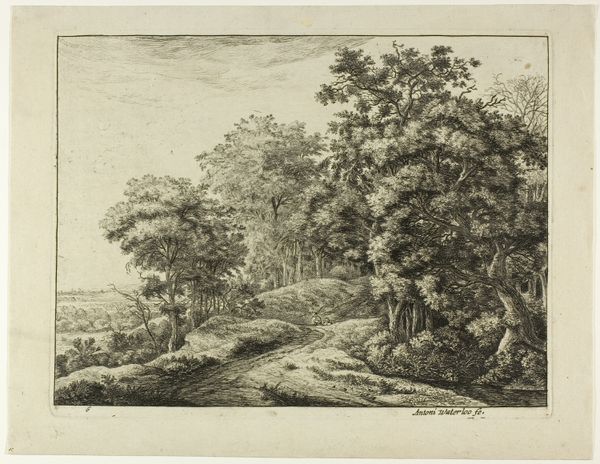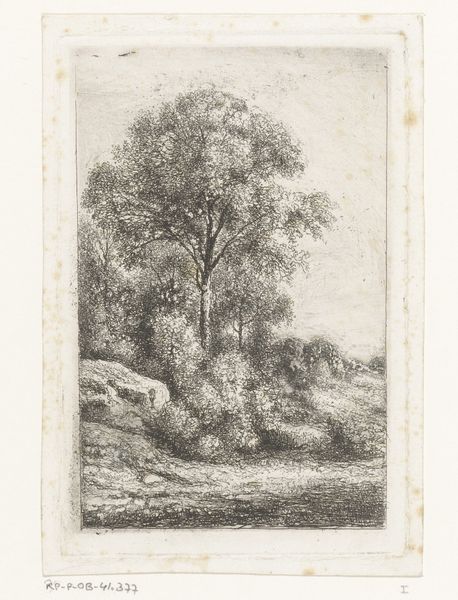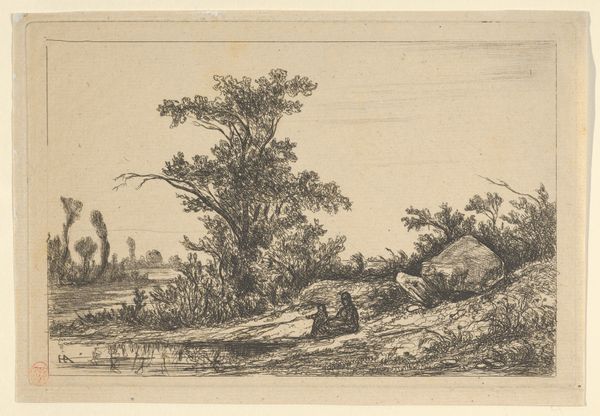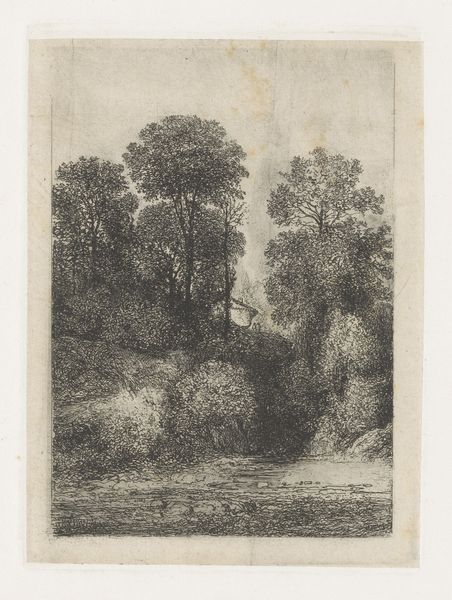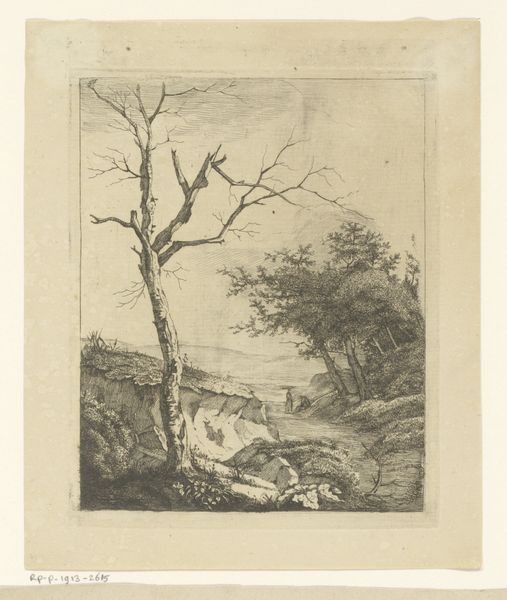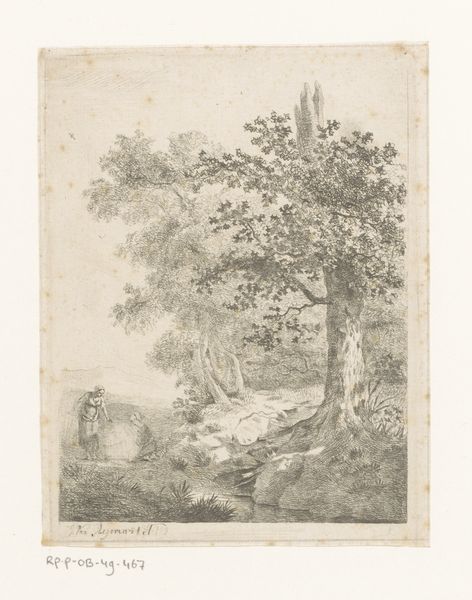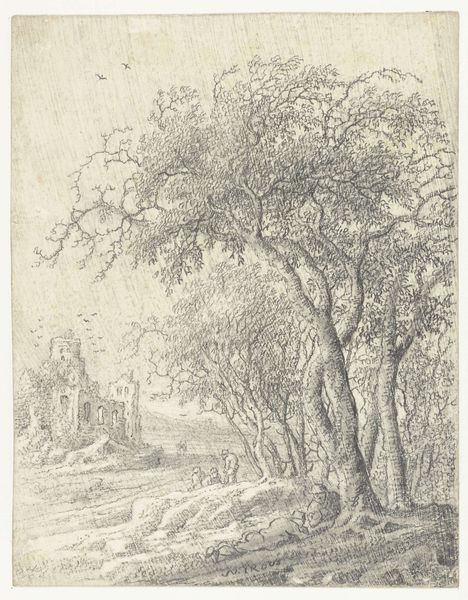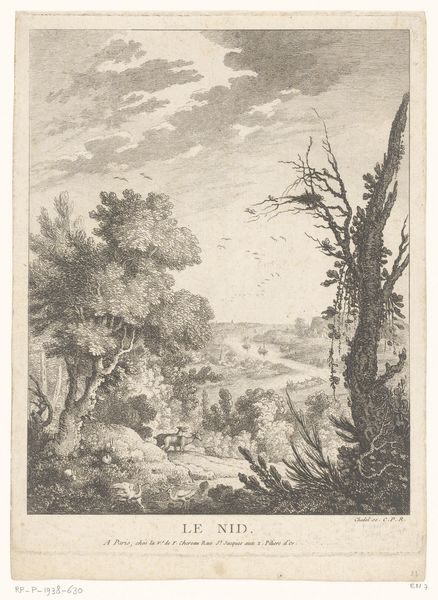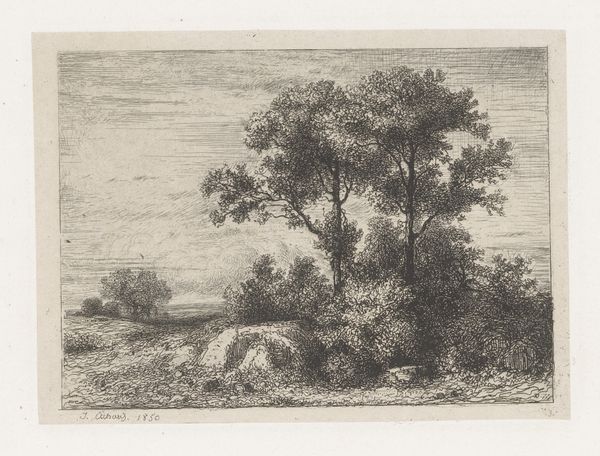
Dimensions: height 183 mm, width 139 mm
Copyright: Rijks Museum: Open Domain
Editor: Right now, we’re looking at Henri-Joseph Harpignies's "Landscape with Trees on a Rock Beside a Path," an etching dating from somewhere between 1829 and 1916. I find the figure so small within the landscape. How do you see this piece? Curator: It is tempting to view this idyllic scene through a purely aesthetic lens, focusing on the romantic interplay of light and shadow rendered through the meticulous etching technique. However, I encourage us to think about the context in which Harpignies was working. Landscapes during this period weren't just about pretty scenery; they were often deeply tied to ideas of national identity and ownership. Editor: So, you are saying it’s more than just pretty trees? Curator: Exactly. Consider the role of the path. It suggests accessibility, even control, over the landscape. Who gets to traverse this space? Who owns it? Is it romanticizing rural life for an increasingly urban audience? Furthermore, the etching itself – as a readily reproducible medium – democratizes access to this idealized vision of the countryside. This challenges the exclusive patronage that dominated the art world before. Editor: That's a really interesting point. So the medium itself has a kind of social implication, because it made the art available to many different social classes? Curator: Precisely. Harpignies wasn’t just capturing a landscape; he was participating in a dialogue about land, ownership, and the role of art in shaping public perception. Editor: I didn’t consider those implications before. I learned to think about it as a piece of art as cultural product in relation to its original moment in time. Thanks. Curator: You're welcome. It is these questions that enable a deeper engagement with the artwork and its relevance beyond the purely visual.
Comments
No comments
Be the first to comment and join the conversation on the ultimate creative platform.
